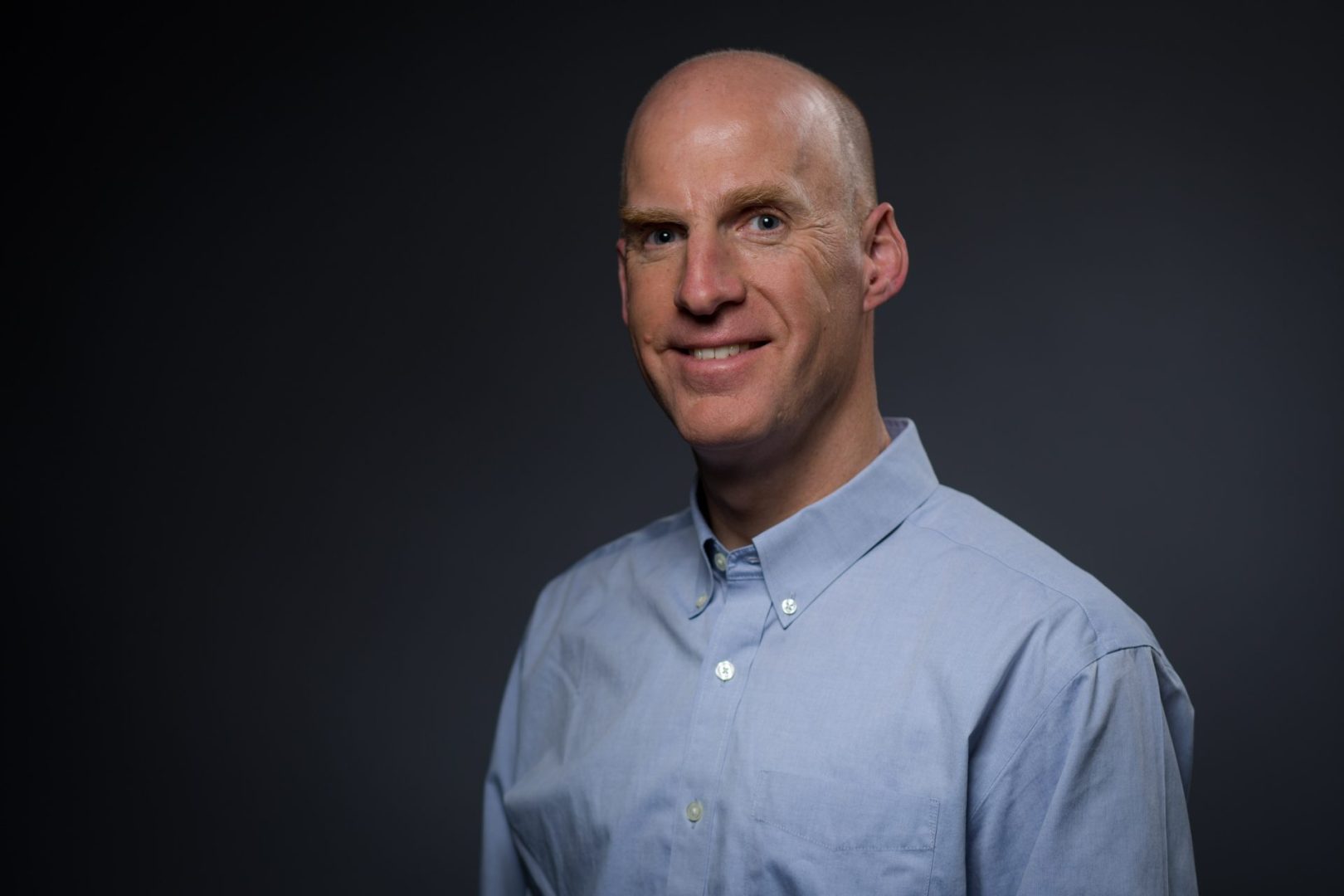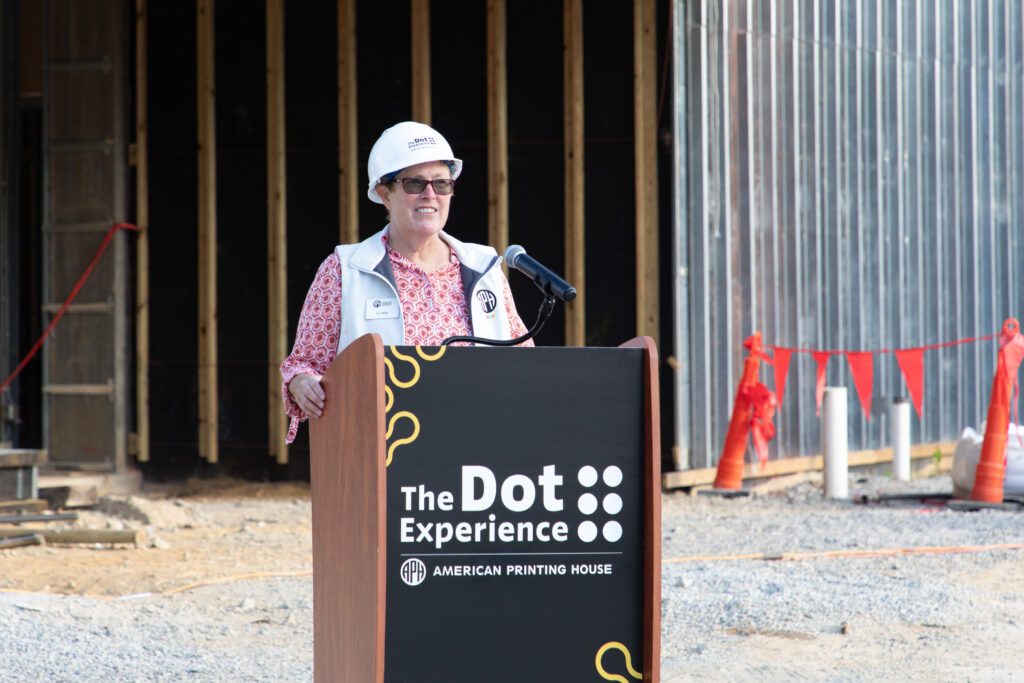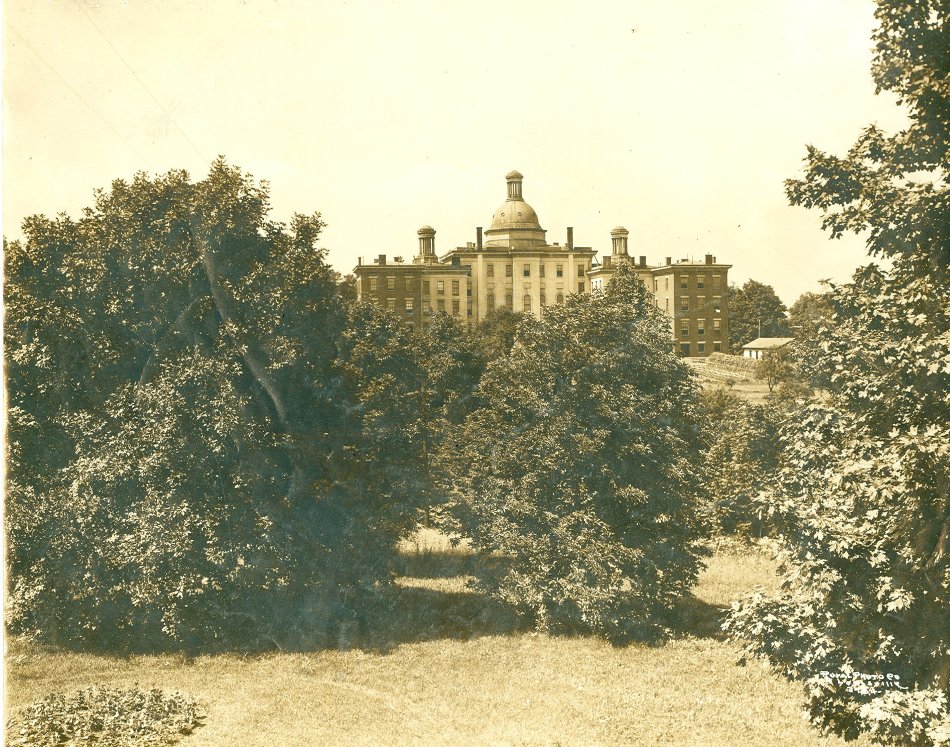To ensure your items arrive in time for the holidays, please place all orders using Free Matter shipping by Saturday, November 29 or by 12pm on Thursday, December 18 for UPS or USPS Priority shipping. School orders will be held after Monday, December 15 through the end of the year.
CloseThe Dot Experience Cast: Chris Downey

Chris Downey is an example of perseverance in the midst of the unknown. He is a champion of accessibility and ensuring that each person knows their value.
Vision Loss
Chris was born sighted and retained his full vision until the age of 45. After being diagnosed with a brain tumor in 2008, Chris went in for surgery to have the tumor removed. He woke up from the surgery completely, and unexpectedly, blind. “I went from full vision to immediately no sight. It was like the flip of a switch,” said Chris.
Chris embraced his vision loss with an immediate desire to overcome this life-altering change as quickly as possible. “The biggest struggle was having patience to let things happen when they needed to.” Within a month, Chris was back in the office before beginning any sort of rehabilitation or training. Chris relied on his wife and coworkers to get to his office, to the bathroom, and home, but once he sat in his office chair he was entirely on his own.
“The rehabilitation department was not able to keep up with the pace I wanted to move at. I was so focused on getting back to work and life at home as quickly as possible. It’s like I wanted my brain to download the ‘no vision operating system,’ ” said Chris. In that time, Chris learned to be patient not only with himself, but with the people around him. He began to realize that it would take time for his mind and body to adjust to his blindness, even when he didn’t want to wait for it.
Career
Spending his entire career as an architect, Chris was 20 years into his profession at the time of his vision loss. “Architecture is a highly visual profession. However, at its core architecture is a creative profession. You just have to find that ulterior perspective,” said Chris.
During the early stages of returning to work, his rehabilitation team met with him in the office and helped Chris develop new ways of viewing his projects. At first, Chris had trouble understanding the tactile drawings in front of him. “I was just trying to figure out what was going on, and my trainer was asking me all of these details about this tactile image. It made me realize I hadn’t even made connections between my brain and my fingers, hadn’t even begun to tap into it. You can have all the right tools, but unless you develop the skills, they aren’t much use,” said Chris. Soon enough, his office was equipped with an embossing printer, tactile drawings, sticks to create drawings, and more. “It just feels like breathing these days,” said Chris.
After the company Chris worked at closed in 2009, a new door of opportunity opened. A business coach connected him with an architecture team that was designing a rehabilitation center for blind veterans. At that time, The Department of Veterans Affairs had a design standard for every type of building, except catering to veterans who are blind or low vision. Before bringing Chris along, the team had no idea how to articulate the needs of a blind or low vision individual, but with his unique perspective they were able to effectively build for their audience. “On one hand, that opportunity gave me a job. On the other, it pointed to a possibility where being blind brought unique value to my work,” said Chris. Since then, he has worked to bring his understanding of blindness and low vision to serve not only the field of blindness, but also designs for all kinds of other disability experiences.
The Dot Experience
Looking toward the Dot Experience, Chris understands first-hand what it means to have a space intentionally designed to serve all people. “Too often the approach is one size fits all, but that mindset is not going to work. It is important to capture the needs of as many, if not all people, in the technology you use,” said Chris. It is important to recognize not only that each of us has unique needs, but also what each of our abilities brings to the table. “You can be overwhelmed with your disability and not notice the unique strengths and values of your potential. If we can’t see past it, the world around us won’t either,” said Chris.
Share this article.
Related articles

Counting Down: One Year Until the Opening of The Dot Experience
With only one year left until the opening of the world’s most accessible museum, there is much to do, and...

Celebrating the First Guide Dog at The Dot Experience
September is National Guide Dog Month. These furry companions play an integral role in ensuring their handlers who are blind...

KSB and The Dot Experience
Nestled beside The Dot Experience, the Kentucky School for the Blind (KSB) has been woven into the Louisville community since...
